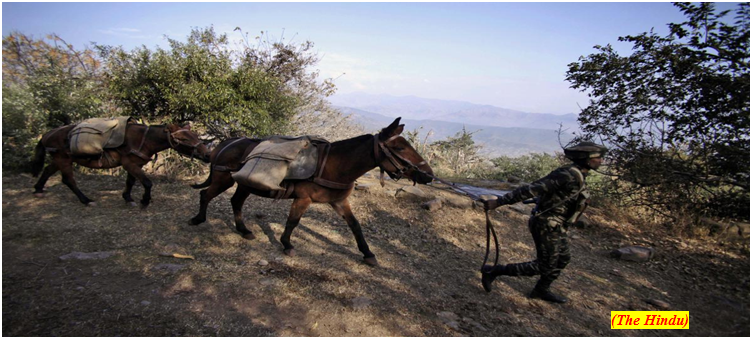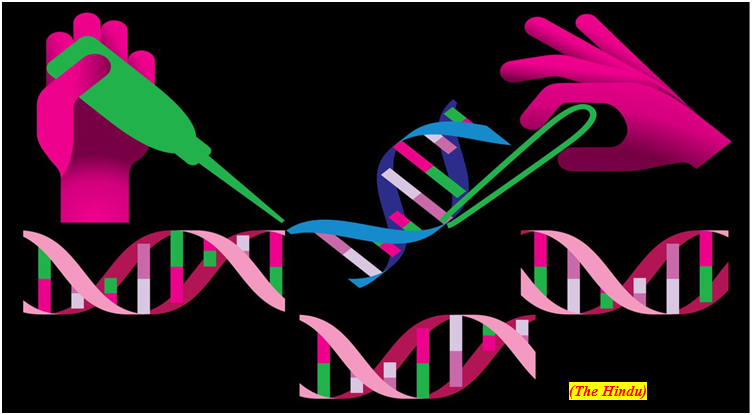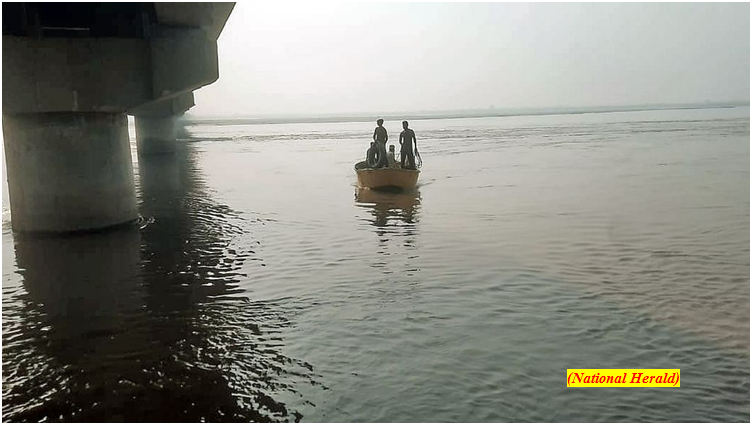House committee calls for more medical facilities for troops at forward locations (GS Paper 2, Polity and Governance)

Why in news?
- Recently, the Public Accounts Committee (PAC), submitted its 55th report on “Provisioning, procurement and issue of High Altitude Clothing, Equipment, Ration and Housing”,
- It is based on the Comptroller and Auditor General’s (CAG) findings in 2019.
(The Hindu)
Key Highlights:
- It said all efforts should be made to fully implement Phase III of the Central Inventory Control Group (CICG) for effective inventory management and procurement.
- The committee observed that a huge quantity of essential items under the Special Clothing and Mountaineering Equipment (SCME) Category-II were procured or held when they were not issued or required for long.
- Noting that CICG, an automated centralised database, had been created to mitigate such issues, it said all measures needed to be taken to fully implement Phase III of the project.
Recommendations:
- The PAC recommended an overhaul of the contracting process between the Defence Ministry and vendors with built-in contractual responses and contractual liabilities on them; and an outcome-oriented monitoring of expenditure and revenue and capital procurement.
- It said the Ministry should collaborate with friendly countries with similar geographical conditions and learn from their experiences for technical specifications.
- Sufficient technical expertise is available in various Indian institutions which could be deployed for projects in harsh terrains. It should periodically get feedback from troops deployed in high altitude areas in terms of taste, quality and hygienic conditions of rations.
- It recommended more comprehensive medical facilities for troops at forward locations.
Way Forward:
- The “Ministry may fulfil assurance that there is no shortfall of High Altitude Clothing & Equipment in Indian Army and complete entitlement of soldiers is adequately met at all forward locations of their deployment”.
How gene therapy could cure cancer
(GS Paper 3, Science and Tech)
Why in news?
- Recently, scientists in the United Kingdom testing a new form of cancer therapy, reported success in a teenaged girl, Alyssia, with a form of cancer called T-cell acute lymphoblastic leukaemia.
What happens in this form of cancer?
- In this form of blood cancer, the T-cells, which are a class of white blood cells, equipped to hunt and neutralise threats to the body, turn against the body and end up destroying healthy cells that normally help with immunity.
- The disease is rapid and progressive and is usually treated by chemotherapy and radiation therapy.
- Alyssia, 13, tried several of the standard treatments including chemotherapy and radiation but with limited success.
- She was the first to receive experimental gene therapy that relied on a new technique called ‘base editing.’

What is ‘base editing?’
- A person’s genetic code is several permutations of four bases: Adenine (A), Guanin (G), cytosine (C) and thymine (T). Sequences of these bases, akin to letters in the alphabet, spell out genes that are instructions to produce the wide array of proteins necessary for the body’s functions.
- In Alyssia’s case, her T-cells, perhaps because of a mis-arrangement in the sequence of bases had become cancerous. A way to correct this mis-arrangement could mean a healthier immune system.
- In the last two decades, the world of biomedical engineering has been enthused by a technique that allow genes to be altered and errors ‘fixed.’ The most popular among these approaches has been the CRISPR-cas9 system.
CRISPR-cas9 system:
- Inspired by how certain bacteria defend themselves against viruses, by snipping out and storing pieces of their genes, the CRISPR-cas 9 system, consists of an enzyme that acts like molecular scissors.
- It can be made to cut a piece of DNA at a precise location and a guide RNA can be used to insert a changed genetic code at the sites of incision.
- While there are a few ways to effect such changes, the CRISPR-cas9 system is believed to be the fast, most versatile system to effect such gene editing.
- While still a nascent technology, base editing is reportedly more effective at treating blood disorders which are caused by so-called single point mutations, or when a change in a single base pair can cause terminal disease.
How did base-editing work for Alyssia’s therapy?
- The objective of the gene therapy in the case of T-cell leukamia was to fix her immune system in a way that it stops making cancerous T-cells.
- First, healthy T-cells were extracted from a donor and put through a series of edits.
- The first base edit blocked the T-cells targeting mechanism so it would cease attacking Alyssa’s body, the second removed a chemical marking, called CD7, which is on all T-cells and the third prevented the cells being killed by a chemotherapy drug.
- Finally, the T-cells were programmed to destroy all cells with CD7 marked on it. After spending a month in remission, she was given a second donor transplant to regrow her immune system that would contain healthy T-cells.
How effective was the treatment?
- Three months after the treatment, her cancer seemed to resurface but the most recent investigations suggest no signs of it.
- Alyssia was one of 10 people enrolled in the trial to receive the treatment.
- It has been 1.5 years since she was first diagnosed with the disease and whether the treatment has reliably and entirely fixed her immune system, remains to be established.
UN recognises Namami Gange project as one of 10 ground-breaking global ecosystem restoration initiatives
(GS Paper 3, Environment)
Why in news?
- Namami Gange project that aims to improve the health of the Ganges, is among 10 “ground-breaking” efforts recognised from around the globe by the United Nations for their role in restoring the natural world.

Details:
- According to a report unveiled during the UN Biodiversity Conference (COP15), climate change, population growth, industrialisation and irrigation have degraded the Ganges along its arcing 2,525-kilometre course from the Himalayas to the Bay of Bengal.
- Restoring the health of the Ganges is the focus of a major push to cut pollution, rebuild forest cover and bring a wide range of benefits to the 520 million people living around its vast basin.
World Restoration Flagships
- The initiatives were declared World Restoration Flagships and are eligible to receive UN-backed promotion, advice or funding.
- They were selected under the banner of the United Nations Decade on Ecosystem Restoration, a global movement coordinated by the UN Environment Programme (UNEP) and the UN Food and Agriculture Organisation (FAO).
- Together, the 10 flagships aim to restore more than 68 million hectares an area bigger than Myanmar, France or Somalia and create nearly 15 million jobs.
- These 10 inaugural World Restoration Flagships show that with political will, science and collaboration across borders, we can achieve the goals of the UN Decade of Ecosystem Restoration and forge a more sustainable future not only for the planet but also for those of us who call it home.
Namami Gange:
- It was launched in 2014.
- The government-led Namami Gange initiative is rejuvenating, protecting and conserving the Ganges and its tributaries, reforesting parts of the Ganges basin and promoting sustainable farming.
- The project also aims to revive key wildlife species, including river dolphins, softshell turtles, otters, and the hilsa shad fish.
- The initiative, with an investment of up to USD 4.25 billion so far, has the involvement of 230 organisations, with 1,500 km of river restored to date.
- Additionally, there have been 30,000 hectares of afforestation so far, with a 2030 goal of 134,000 hectares.
Other World Restoration Flagships:
The other inaugural World Restoration Flagships include
- The Trinational Atlantic Forest Pact, which aims to protect and restore the forest in Brazil, Paraguay and Argentina
- The Abu Dhabi Marine Restoration project which is safeguarding the world’s second-largest dugong population in Abu Dhabi.
- The Great Green Wall for Restoration and Peace initiative to restore savannas, grasslands and farmlands across Africa,
- The Multi-Country Mountain Initiative based in Serbia, Kyrgyzstan, Uganda and Rwanda,
- The Small Island Developing States Restoration Drive focused on three small island developing states Vanuatu, St Lucia and Comoros.
- The Altyn Dala Conservation Initiative in Kazakhstan to restore the steppe, semi-desert and desert ecosystems,
- The Central American Dry Corridor, and
- Shan-Shui Initiative in China were the other projects on the list.
UN Decade on Ecosystem Restoration:
- In revealing the World Restoration Flagships, the UN Decade seeks to honour the best examples of large-scale and long-term ecosystem restoration, embodying the 10 Restoration Principles of the UN Decade on Ecosystem Restoration.
- The UN Decade acknowledges the time needed for restoration efforts to deliver results.
- Until 2030, regular calls for World Restoration Flagships will be launched.
- In expectation of increased funding to the UN Decade’s Multi-Partner Trust Fund (MPTF), additional submissions are being considered, including restoration drives from Pakistan, Peru, and an initiative focusing on Somalia and other drought-affected countries.




